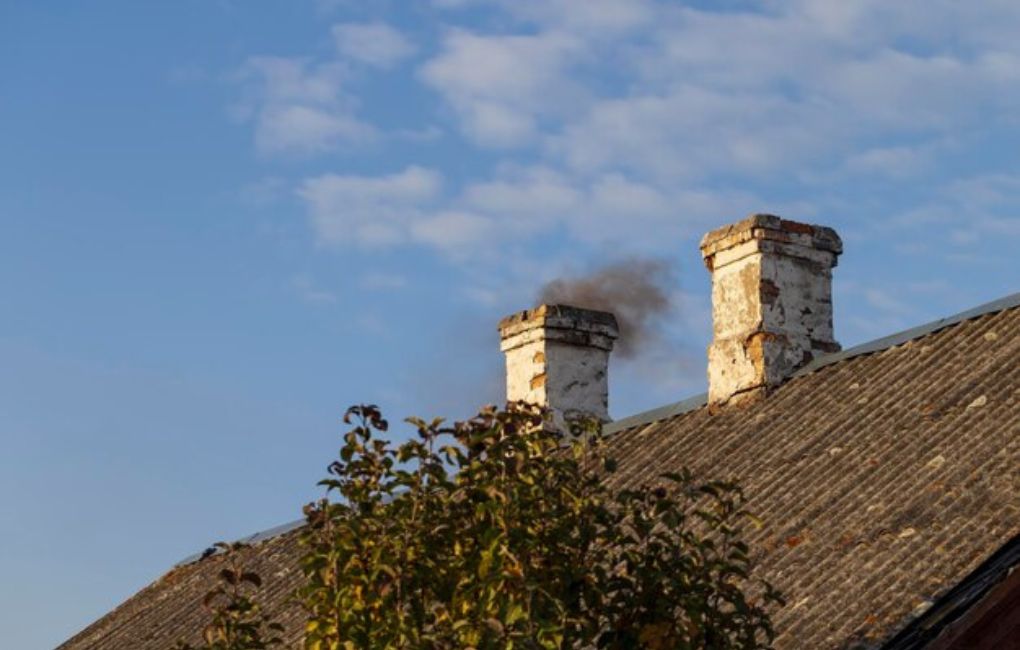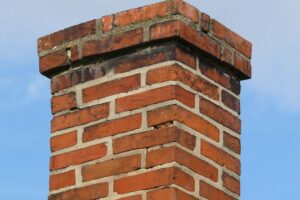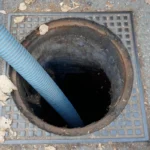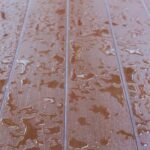If you’ve noticed water stains or a musty smell in your home, a water-damaged chimney could be the cause. Common causes of chimney leaks include deteriorating mortar joints, missing or damaged chimney caps, and faulty flashing. A leaking chimney threatens your roof and walls and can lead to costly structural repairs.
Prompt chimney leak repair is essential to stop the water intrusion at its source. To prevent future problems, it’s wise to waterproof the chimney with high-quality sealants. Regular inspections and maintenance help ensure your chimney stays dry, efficient, and free from further water-related issues.
Now is the time to take a closer look at how to diagnose and fix a leaky chimney!
Common Signs of a Leaking Chimney
Spotting water stains on your walls or ceiling near the chimney clearly indicates a potential leak. Early detection can help prevent more serious damage to your home.
Water Stains on Walls or Ceiling Near Chimney
Water stains near your chimney often signal a chimney leak. These stains, typically yellow or brown, indicate water infiltration, usually through cracks in the masonry or damaged flashing. Left unchecked, these issues can lead to further structural damage.
If you notice these stains, inspect the area for visible cracks, gaps, or missing flashing. Promptly addressing these concerns can prevent the water from causing more significant damage and help protect your home from costly repairs.
Musty Smells or Mold Growth in the Fireplace
Musty smells or mold growth in your fireplace often signal moisture intrusion. Excess moisture can create a breeding ground for mold, leading to unpleasant odors and potential health risks. This moisture typically enters through cracks in the masonry or deteriorated flashing. Addressing these issues promptly can help prevent further damage and protect your home from moisture-related problems.
If you detect musty odors or see mold in your fireplace, it’s essential to inspect your chimney for damage. A professional inspection can help prevent further moisture-related issues and potential health hazards.
Dripping Sounds During or After Rainfall
If you hear dripping sounds from your chimney during or after rainfall, it’s likely caused by a leaking chimney. This occurs when rainwater seeps through cracks, gaps, or damaged flashing in the chimney structure. The dripping sound is often a clear sign that water is infiltrating your home, leading to possible water damage.
It is important to inspect the chimney for visible damage and seek professional repairs quickly. Promptly addressing the issue helps protect your home from further water-related and structural damage.
What Causes Chimney Leaks?
Chimney leaks can stem from several common issues you might not notice. Understanding these causes is essential to keeping your chimney—and home—safe from moisture damage.
Damaged or Missing Flashing
A chimney issue is often caused by damaged or missing flashing, which seals the joint between the chimney and the roof. Water can infiltrate your home without effective flashing, leading to water damage and costly repairs.
Regular inspection and maintenance of the flashing can prevent these issues. If you notice any signs of wear or damage, call a professional to ensure the flashing is intact, properly installed, and functioning to protect your home from leaks.
Cracked Chimney Crown
A cracked chimney crown is one of the causes of chimney leaks, allowing water to penetrate the chimney structure. Over time, temperature fluctuations and weather conditions can cause these cracks. Inspecting the chimney crown regularly for damage is essential to avoid water infiltration and mold growth.
If you detect any cracks, it’s essential to have them professionally repaired or replaced to maintain the chimney’s integrity and prevent further water damage to your home.
Worn or Missing Mortar Joints
Worn or missing mortar joints are common causes of fireplace leaks. As the mortar deteriorates, gaps form, allowing water to seep into your home. This can lead to extensive water damage and mold growth. Addressing this issue through tuckpointing restores the mortar joints, preventing further leaks.
Regular chimney inspections help detect wear early, and hiring a professional ensures the repairs are done correctly to safeguard your home from moisture-related damage.
Solutions to Stop Chimney Leaks
Several effective options are available to stop chimney leaks. If you’re uncomfortable tackling it yourself, consider scheduling a professional inspection and repair to guarantee everything’s in top shape.
Apply Chimney Waterproofing Sealant
Sealants to waterproof chimneys effectively prevent leaks by forming a moisture barrier. Choosing a breathable, high-quality sealant that allows moisture to escape while blocking water is vital.
Clean and dry your chimney before application, then apply the sealant evenly, focusing on cracks and joints. Regular maintenance ensures your chimney remains leak-free and extends its lifespan, protecting your home from water damage.
Repair or Replace Flashing
Flashing is vital in preventing leaks by sealing the joint between your chimney and roof. If you notice water stains near your chimney, check the flashing for damage, such as cracks or rust.
Minor damage can be repaired with roofing sealant, but severe damage requires full replacement. Proper installation and regular maintenance are essential for keeping your chimney and ceiling intact, preventing leaks, and avoiding potential water damage.
Fix Chimney Crown and Mortar Joints
A cracked chimney crown or deteriorating mortar joints often causes leaks. Inspect the crown for cracks and use a waterproof sealant for minor issues or replace it if necessary. Check mortar joints for gaps and eroded sections, repairing them with new mortar.
Regularly maintaining these parts of your chimney prevents water intrusion and extends its lifespan, safeguarding your home from chimney leaks.
Install or Repair the Chimney Cap
A chimney cap is essential for keeping moisture and debris out of your chimney. If your chimney cap is cracked, rusted, or missing components, it’s time for chimney leak repair or replacement.
Ensure the new or repaired cap fits snugly over the flue and is properly secured to prevent water entry. A functioning chimney cap is crucial for preventing leaks, protecting your chimney structure from water damage, and ensuring the safety and efficiency of your chimney system.
Professional Chimney Inspection and Repair
Scheduling a professional chimney inspection is essential for preventing leaking chimney issues. Experts can identify hidden problems, such as cracked masonry, damaged flashing, or deteriorating mortar, which may lead to leaks. They have the tools and experience to address any damage and perform necessary repairs.
Regular inspections will help ensure your chimney remains in good condition, protecting your home from leaks and costly water damage caused by untreated issues.
When to Call a Water Damage Specialist
Recognizing water damage early can help you avoid costly repairs and prevent long-term issues. If you notice discoloration, water stains, or mold growth on your walls or ceilings, it’s time to act. These are common signs of water-related issues with your chimney. If you notice significant water pooling around the chimney area or your floors feel soft or bouncy, water has likely infiltrated your home.
Excessive humidity or frequent leaks are also signals that you need professional assistance. A water damage specialist can assess the situation, identify hidden issues, and offer solutions to prevent further damage. Addressing the problem early ensures a safer, healthier living space and protects your home from further damage.
Final Thoughts – Dealing with Chimney Leaks
Dealing with a leaking chimney is essential to prevent further damage to your home. By recognizing the common signs and understanding the causes, you can take proactive steps to address the issue. Whether you tackle repairs or call in professionals, promptly addressing leaks will protect your home’s integrity.
Don’t wait until it’s too late—regular inspections and maintenance are key to keeping your chimney in top shape and avoiding costly repairs down the road. Think your chimney is leaking? Get professional help before it causes water damage, and give our team a call today!









